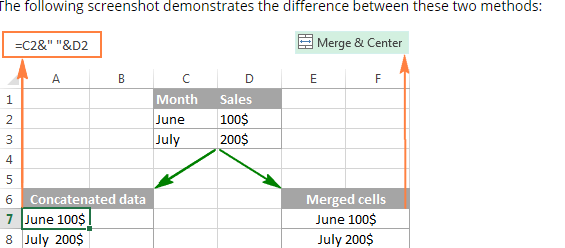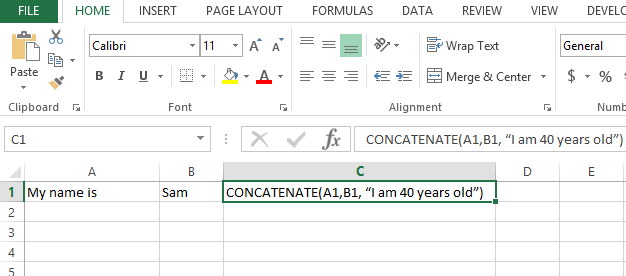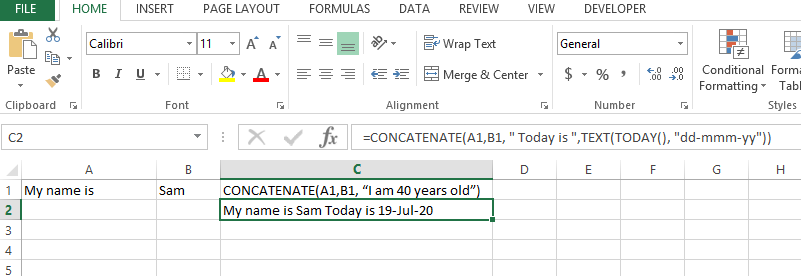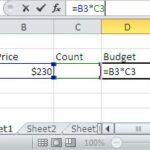How to Concatenate Cells in Excel
In this article, I will guide you on how to concatenate multiple cells quickly using different methods with examples. You’ll also learn why concatenation is often preferred over merging cells.
Why Use Concatenation Instead of Merging Cells?
Merging cells creates one big cell. It can mess up your data. Concatenation joins cell content. It keeps your data separate.

How to Use the CONCATENATE Function
Use the CONCATENATE function to join text. The formula is:
=CONCATENATE(text1, [text2], …)
Where:
- text1 is the first text string that you want to concatenate.
- text2 is the second text string that you want to concatenate.
- … is an optional list of additional text strings that you want to concatenate.
For example, the following formula would concatenate the contents of cells A1 and B1:
=CONCATENATE(A1,B1)

The results explain this.
We can also use strings in the formula itself as explained in the following example:

=CONCATENATE(A1,B1, “I am 40 years old”)
We can also use formula calculated values like dates as explained in the following example:
=CONCATENATE(A1,B1, ” Today is “,TEXT(TODAY(), “dd-mmm-yy”))
Which gives the following result:

As you can see cells are concatenated now.
An alternative to CONCATENATE is the & operator, which can make formulas shorter and easier to read:
- =A1 & ” ” & B1 & “, I am 40 years old”
- =A1 & B1 & ” Today is ” & TEXT(TODAY(), “dd-mmm-yy”)
The ampersand (&) is even easier. It does the same thing: =A1&B1 is simpler than =CONCATENATE(A1,B1).



Leave a Reply